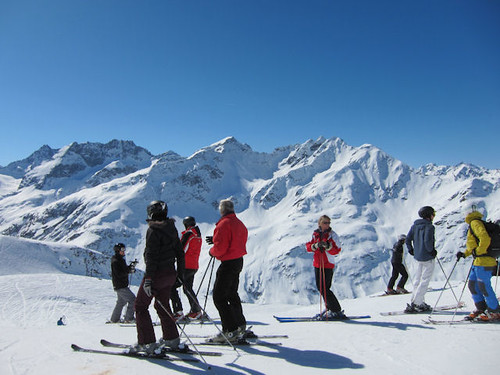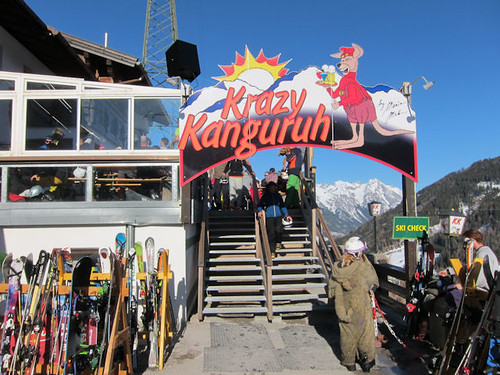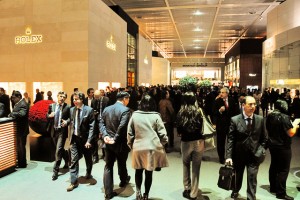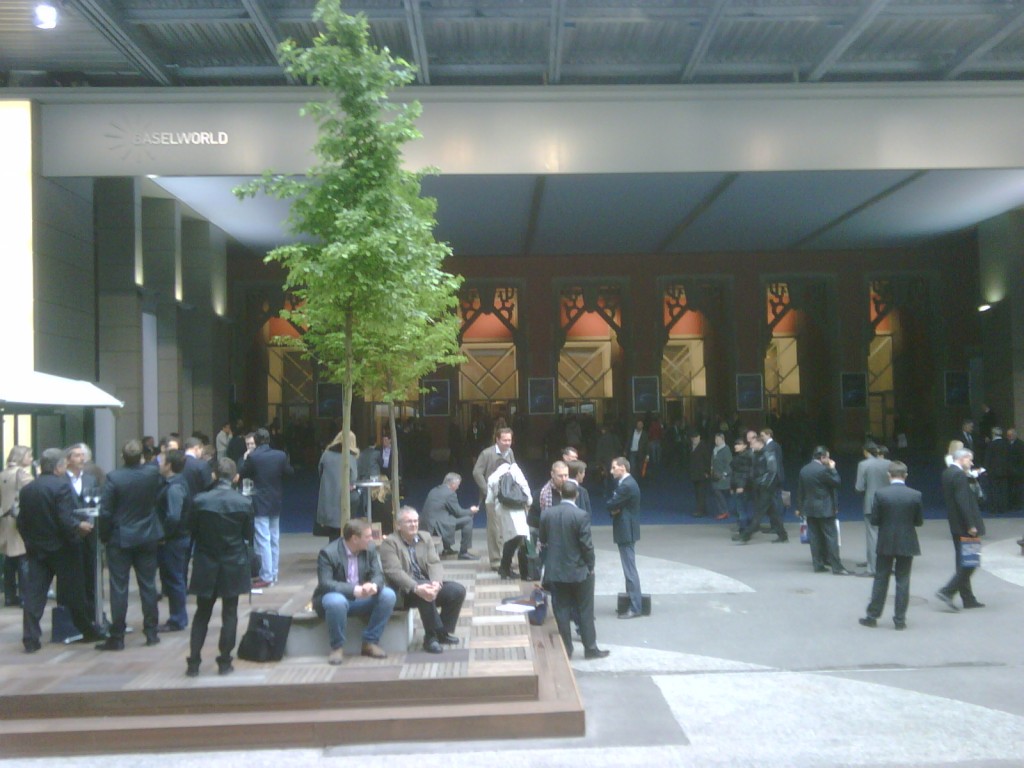
Some old friends from the Hellfins Scuba Diving Club have been on a week’s ski holiday in St Anton, so I thought I would pop across to see them. Surprisingly it is quicker to get to St Anton by car from Basel than it is to get to some resorts in Switzerland. The road trip is a doddle, roughly 3 hours and around 2 hours from Zurich. Key things to remember driving from Switzerland to St Anton are:
- It isn’t obvious where to cross the border. You drive on the motorway towards St Gallen and after St Gallen follow the signs to Chur until you reach exit 3, signposted Widnau, Diepoldsau and Heerbrugg. You drive through Diepoldsau until you hit the border where you can pick up the motorway towards Innsbruck.
- On the return journey it is easier. The Austrians do acknowledge that people might want to cross the border, so you will see signs for Switzerland and St Gallen. The junction to exit the Austrian motorway is 23, just after a motorway service station.
- Whatever you do avoid crossing the border around Bregenz. It will add a lot of time to your journey.
- You need a permit to drive on the Austrian motorways. You can pick one up at the motorway service station after St Gallen at St Margarethen or wait until you hit the first motorway service station in Austria. I’m sure any other service station in Diepoldsau will sell them too, but I’ve not tried. The stickers cost around 8 euro for the minimum duration of 10 days.
- You need to go through the 14km Arlberg tunnel and drive sharply off it as you exit the tunnel to get to St Anton. You can drive over the Arlberg pass, if it is open, and save yourself the 8.50 euro fee for the tunnel. Scenic but adds time.
- In Austria you are required by law to have winter tyres in wintery conditions. I don’t have winter tyres, but the road conditions for my trip didn’t warrant them. Probably a different story if you go over the Arlberg pass or the weather is bad, although I’ve nenver invested in a set. If the road conditions warrant it, I just don’t drive.
- When you arrive in St Anton you are given a choice of car parks to stay in. None of them are free. I chose the Rendl car park, situated where the old Rendl lifts used to operate and just a few minutes walk to the Rendl, Gampen and Galzig lifts.
As a keen user of public transport you may ask why I didn’t take a train. Granted St Anton has a railway station and indeed it is a very good way to get there – I’ve done it before, from the UK. However from Switzerland the service does not start early enough to get to the resort for a one day ski trip.
For some reason the railway connections between Switzerland and Austria are crap, which is strange because they are so good to other neighbouring countries. You can’t blame the Alps because the Swiss have been tunneling through them like demented moles for years. Bizarrely, the Rhaetian Railways have a line that passes through the 19km Vereina tunnel all the way to Scuol, in the Inn Valley where you would have thought it would be the easiest thing in the world to extend the railway towards Innsbruck, but no, the line stops just a few kilometres shy of the border. My own theory is that the Austrians didn’t want the Voralbergers to get too cosy to the Swiss and avoided making it easy to pass between the Voralberg and Switzerland. Around the time of significant expansion of rail and road networks the 80% of the people of Voralberg did actually vote to become part of Switzerland, but were prevented from doing so. They still speak an Alemmanic dialect more like Swiss German than Austrian German. The Arlberg ski resorts are not all in the Voralberg, Lech and Zurs are, but St Anton is in the Tyrol.
Anyway, I digress. if you do want to take the railway from Switzerland to St Anton, there is a direct service from Zurich which takes from about 2 hours 20 minutes. The train runs 5 times a day, and there are other times you can travel, but you need to change trains. The earliest train is at 8.40am, and the earliest train for which you do not need to change is 10.40am. Certainly makes St Anton do-able for a long weekend if you can find somewhere to stay.
And why would you you choose to go to St Anton, you may ask. The answer is that it is quite simply the best ski resort in the world. Not as extensive as the large French circuits but bags of variety and plenty of off-piste. The nearby resorts of Lech and Zurs used to be connected to the St Anton pistes, but in recent years that run can only be done off-piste. Not sure why, it was one fabulous circuit when it was in place, but neighbouring resorts are still easy enough to get to by bus or taxi. Where St Anton really scores over the French resorts, however, is the nightlife. Not as wild as it used to be, and not as crazy as Mayrhofen or Ischgl, but still pretty good. A few beers at the end of the day in Taps, the Krazy Kanguruh and/or the Mooserwirt (which reputedly sells more beer than any other bar in Austria) followed by a crawl around Base Camp, Underground on the Piste, the Piccadilly and the Kandahar makes for a great night out.

Of the Swiss resorts, probably only Grindelwald, Verbier and Zermatt can match St Anton for range of slopes, scenic setting and decent apres ski. Zermatt shades St Anton for fine eating, and nothing compares with the splendid views of the Matterhorn that dominate Zermatt, but it is more expensive and not as good for beginners. For me the main advantage of Verbier is it is French-speaking, and is probably the best of all the resorts for hard core off-piste. Grindelwald has a quieter (but reasonable) night-life and apres ski scene and fewer challenging off-piste runs, but is blessed with the awesome North Face of the Eiger dominating the town and its slopes.
Finally, on the subject of driving to ski resorts in Austria, Lech is about the same journey time as St Anton – you exit before the Arlberg Tunnel. Ischgl is probably easier to get to than Samnaun, the Swiss resort it shares the Silvretta Arena with, and takes about another half an hour to get to after you pass St Anton (turn right at Pians – it is clearly signposted).


